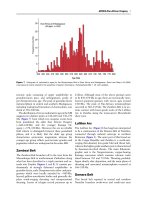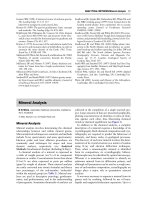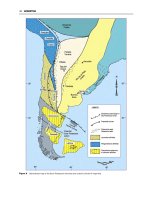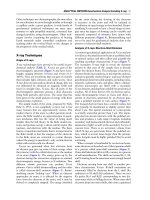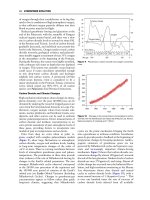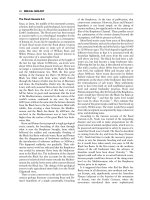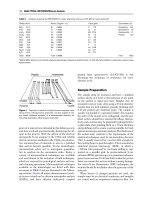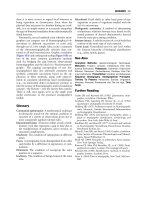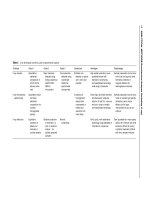Encyclopedia of geology, five volume set, volume 1 5 (encyclopedia of geology series) ( PDFDrive ) 2302
Bạn đang xem bản rút gọn của tài liệu. Xem và tải ngay bản đầy đủ của tài liệu tại đây (94.52 KB, 1 trang )
RUSSIA 459
Figure 3 Crustal provinces of the East European Craton (compiled using data by Gorbatschev and Bogdanova).
Vendian and Ediacaran). Accumulation of the sedimentary basins was controlled by the Iapetus and
Tornquist Oceans to the west (modern coordinates)
and the foreland basin of the Timanides to the east
(see Europe: Timanides of Northern Russia). The
craton was elevated at the end of the Early Cambrian
synchronously with the final orogenesis in the
Timanides.
Middle Cambrian to Early Devonian rocks form a
wide basin that might have fully covered even the Baltic
Shield. The principal basins are Baltic, MoscowMezen-Pechora, Peri-Urals, and Peri-Caspian, but
they formed a united system of epicontinental seas. In
the Ordovician, to the east of the craton, was the Urals
Ocean or oceanic back-arc basin, and the poorly studied Scythian Ocean was to the south. Marine sedimentation was controlled by climate: for the Middle
Cambrian to Middle Ordovician strata, clays, sandstones, and carbonates are typical; in the Late Ordovician to Silurian, carbonate rocks are dominant; in Early
Devonian times, red clastic rocks began to dominate
against a background of arid climate and regression,
culminating in total sea regression.
The Middle Devonian to Permian cover was
formed in the epicontinental marine basin. The
Middle Devonian rocks are typical clastic and carbonate sediments. At the Givetian-Frasnian transition
was a magmatic event and rifting, with a system
of rifts (Figure 4), such as Pripyat-Dnieper, Donets,
Peri-Caspian, Barents Sea, Kola, Timan-Pechora,
and Vyatka. During that time, diamondiferous kimberlites formed in the Arkhangelsk region, and
the world’s largest alkaline ultramafic massifs were
emplaced in the Kola Peninsula. Middle to Late
